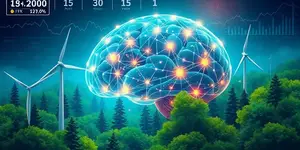Microloans have transformed from a bold social experiment to a cornerstone of global development. In the U.S., these small loans—typically up to $50,000—help underbanked entrepreneurs launch or expand ventures. In developing regions, even $27 can ignite profound change. By providing access to capital for financially excluded individuals, microloans combat poverty, foster independence, and generate meaningful returns.
Beyond mere charity, this form of lending balances profit and purpose. High repayment rates often exceed 95%, proving that socially driven finance can thrive. From rural Bangladesh to urban America, microfinance institutions channel funds into communities that traditional banks overlook, cultivating resilience and opportunity.
Origins and Evolution of Microfinance
The modern microfinance movement began in the 1970s with Muhammad Yunus’s Grameen Bank project in Bangladesh. His pioneering group-lending methodology offered collateral-free loans to women, relying on peer accountability rather than physical assets. This approach achieved a remarkable 98% repayment rate.
By the 1990s, microfinance had spread worldwide. Organizations like Kiva, the U.S. Small Business Administration (SBA) Microloan Program, and Grameen America tailored models to local needs. Each iteration retained a core principle: small capital injections can yield outsized social and economic returns.
Mechanisms and Models of Micro Lending
Microloans operate through varied mechanisms. Some programs disburse funds directly; others partner with nonprofits or community groups. Borrowers might need minimal collateral, but often they participate in group lending and peer support models that harness social cohesion to ensure repayment.
Successful lenders complement loans with financial education and business training. This dual approach fosters sustainable entrepreneurship and informed decision-making. In many regions, loan repayments are pooled, creating a virtuous cycle where capital replenishes and empowers new borrowers.
Key Statistics at a Glance
Economic and Social Impacts
Microloans drive entrepreneurship, empowering individuals to turn ideas into income-generating activities. By focusing on women and underserved populations, these programs challenge gender inequality and stimulate local economies.
Evidence shows 91% of participants report greater financial confidence, and 77% increase their savings. In regions where formal employment is scarce, microloans become lifelines, funding essentials like inventory, equipment, and home improvements.
Applications and Uses of Microloans
- Working capital and inventory purchases
- Equipment, furniture, and machinery
- Startup costs for microenterprises
- Investment in education, healthcare, and housing
Empowerment Through Entrepreneurship
By offering small loans that change lives, microfinance institutions cultivate local leadership and self-reliance. A single $500 loan can launch a tailor shop, a food stall, or a craft cooperative, providing sustainable income and fostering community pride.
When women control financial resources, the impact multiplies. Children’s education and family health often improve first. Communities witness a ripple effect: as businesses flourish, they create jobs, enhance services, and inspire neighbors to follow suit.
Balancing Returns: Financial vs Social
Investors in microloans pursue a dual bottom line: monetary gain and social progress. Platforms like Kiva offer 0% interest options purely for social return, while commercial lenders may charge 15%–30% interest. Despite rate variations, high repayment rates enabling sustainability ensure that capital continually flows back into new ventures.
Microloans also help borrowers build credit histories. Successfully repaid loans pave the way for larger institutional financing, expanding possibilities beyond the micro scale and reinforcing long-term economic inclusion.
Challenges and Criticisms
Not all microfinance stories are unblemished. In some markets, interest rates exceed 30%, sparking debate over predatory practices. Critics question the true net income gains for borrowers, and some studies indicate limited changes in annual earnings.
Scalability remains a hurdle. Serving remote or niche populations can be resource-intensive, and application processes may lag behind agile online lenders. Continuous innovation is needed to streamline operations and lower costs.
The Future of Microloans
Fintech and digital platforms are poised to revolutionize microfinance. Mobile lending apps, blockchain-enabled transactions, and data-driven credit scoring offer broader access through digital platforms. These tools can reduce overhead, speed approvals, and reach millions more.
Moreover, impact investors are increasingly integrating environmental and social governance metrics into microloan portfolios, ensuring that returns align with global sustainability goals. As technology and capital converge, microloans may become a key lever in achieving equitable growth.
Conclusion
Microloans represent a powerful intersection of finance and social good. By providing poverty alleviation and economic development, they offer a path to independence for millions who lack traditional credit access. High repayment rates and reinvestment cycles underscore their viability.
From the pioneering fields of Bangladesh to urban neighborhoods in the U.S., microfinance continues to evolve. With thoughtful regulation, ethical practices, and technological innovation, microloans can sustain their legacy of empowerment and yield lasting returns—for individuals, investors, and society at large.
References
- https://www.sba.gov/funding-programs/loans/microloans
- https://socialjusticeresourcecenter.org/facts-and-figures/microfinance-facts-figures/
- https://www.congress.gov/crs-product/R41057
- https://fitsmallbusiness.com/microfinance-statistics/
- https://www.kiva.org/microfinance
- https://www.investopedia.com/terms/m/microfinance.asp
- https://corporatefinanceinstitute.com/resources/commercial-lending/microfinance/
- https://www.nerdwallet.com/article/small-business/microloans










